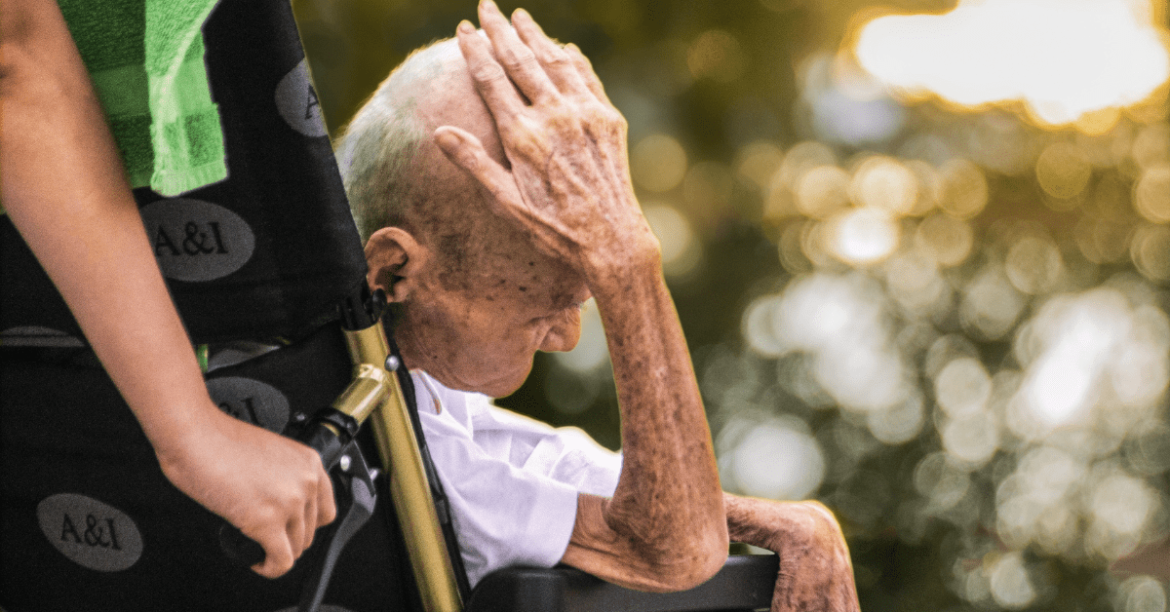Disability abuse is a deeply concerning problem that affects millions of people worldwide. Sadly, it persists everywhere, including households, long-term care facilities (e.g., assisted living, memory care, nursing homes, etc.), and workplaces. One of the most vulnerable groups to such abuse is older adults, with at least 10% of them over the age of 65 getting abused every year.
In light of the alarming prevalence of abuse of persons with disabilities, it is only natural to feel a strong desire to shield our loved ones from harm. By taking proactive steps to prevent disability abuse, we can create a safe environment where individuals with disabilities can thrive.
Through this blog, we aim to educate our readers about disability abuse, its warning signs, relevant laws, how to report such incidences and the available resources for support.
Let’s work together to raise awareness, educate others, and foster a society that values and respects the rights and well-being of all individuals, regardless of their abilities.
What is considered abuse of a disabled person?
Abuse of a disabled person encompasses various forms of mistreatment, such as physical, emotional, or financial abuse, neglect, and discrimination, specifically targeting individuals with disabilities. The following are some forms of abuse commonly recognized:
1. Physical abuse of a disabled person
It involves the use of physical force that results in pain, injury, or impairment. It can include hitting, slapping, pushing, restraining, or any other act that causes physical harm.
2. Emotional abuse of a disabled person
Emotional abuse refers to behavior that undermines an individual’s self-worth, causes psychological suffering, or impairs their emotional well-being. It can include verbal insults, humiliation, intimidation, threats, isolation, or constant criticism.
3. Sexual abuse of a disabled person
Sexual abuse involves any non-consensual sexual act or exploitation of a person with a disability. That can include forced sexual activity, unwanted touching, sexual harassment, or any other form of sexual exploitation.
4. Financial abuse of a disabled person
Financial abuse occurs when someone mishandles or exploits the financial resources or assets of a disabled individual. It can include theft, fraud, coerced financial transactions, withholding funds or benefits, or exerting control over their finances without consent.
Also, keep in mind that abuse can take various forms and may overlap in some cases. Additionally, neglect and discrimination are also significant forms of abuse that can affect disabled individuals, depriving them of necessary care, opportunities, or equal treatment.
What are the indicators of abuse of persons with disabilities?
Indicators of abuse of persons with disabilities can vary depending on the nature of abuse and the individual’s specific circumstances. However, here are some common indicators that may suggest abuse:
- Physical indicators: Unexplained injuries, bruises, restraint marks, malnourishment.
- Emotional indicators: Sudden behavior changes, fear, isolation, low self-esteem.
- Sexual indicators: Genital injuries, STDs, fear, inappropriate sexual behavior.
- Financial indicators: Unexplained loss of funds, unauthorized use of resources.
- Behavioral indicators: Increased dependence, neglect, restricted access to care.
Disability abuse laws
In the United States, disability abuse is addressed under various federal and state laws that protect the rights and well-being of people with disabilities. Here are some key laws related to disability abuse in the USA:
1. Americans with Disabilities Act (ADA)
The ADA condemns discrimination against individuals with disabilities in various areas, including employment, public accommodations, transportation, and government services. It ensures equal opportunities and accessibility for people with disabilities.
2. Rehabilitation Act of 1973
Section 504 of this act forbids discrimination on the basis of disability in initiatives and programs that receive funding from the federal government. It covers a broad spectrum of organizations, such as government offices, universities, and schools.
3. Protection and Advocacy for Individuals with Mental Illness (PAIMI) Act
This law establishes the Protection and Advocacy System, which provides legal advocacy services for individuals with mental illness or emotional impairment, protecting their rights and addressing abuse or neglect.
4. Elder Justice Act
While not specific to disabilities, this act addresses abuse, neglect, and exploitation of older adults, including those with disabilities. It provides resources and support to prevent and respond to elder abuse.
5. State Laws
In addition to federal laws, individual states have their own laws and regulations that address disability abuse and provide additional protections for individuals with disabilities. These laws may vary from state to state.
How to report disability abuse?
If anyone suspects or witnesses disability abuse, it is crucial to take action and report it to the appropriate authorities. Reporting disability abuse helps protect the rights and well-being of individuals with disabilities. Here are the steps to report disability abuse:
- Ensure the person’s safety: If the person with a disability is in immediate danger or requires urgent medical attention, call emergency services right away (e.g., 911 in the United States).
- Document the details: Write down or record as much information as possible about the abuse you observed or suspect. Include dates, times, locations, descriptions of the abuse, and the names of those involved or responsible, if known. The more detailed your account, the better it will be for investigators.
- Contact the appropriate authorities: Depending on the nature and severity of the abuse, you may need to report it to one or more of the following agencies or organizations:
- Adult Protective Services (APS)
- Child Protective Services (CPS)
- Law enforcement
- Disability advocacy organizations
- Abuse hotline for disabled
- Provide all relevant information: When reporting disability abuse, be prepared to provide all the information you have gathered, including the details you documented. This will assist the authorities in running their investigation.
- Follow up: After making a report, follow up with the appropriate agency or organization to ensure that action is being taken. If necessary, provide any additional information or assistance that may be requested.
Disability abuse in senior living facilities: How to address?
Senior living facilities are meant to provide a safe and supportive environment for seniors with disabilities, but unfortunately, instances of abuse can occur. To address disability abuse in senior living facilities, several steps can be taken:
- Prevention and education: Implement comprehensive staff training programs.
- Reporting channels: Set up clear and accessible channels for reporting suspected abuse.
- Enhanced supervision: Increase oversight and monitoring of staff.
- Staff screening and background checks: Implement thorough screening procedures for employees.
- Collaboration with authorities: Foster collaboration with local authorities for investigations.
- Enhanced regulations and inspections: Strengthen regulations and conduct regular inspections.
- Supportive services: Provide residents with access to counseling, legal aid, and advocacy.
- Family and community involvement: Encourage engagement and accountability.
Final thoughts
Disability abuse is an issue that demands our attention and action, particularly when it comes to protecting our elderly loved ones. It is essential for us to be vigilant and proactive in identifying signs of abuse or mistreatment. Additionally, we need strong legal frameworks and institutions that address disability abuse effectively.
We hope this blog has shed light on the pressing issue of disability abuse and inspired you to act. It is our collective responsibility to protect our elderly loved ones and ensure they live their lives free from harm. Let us stand united in creating a society that values and cherishes the rights of individuals with disabilities.
FAQs
Is substance abuse a disability for social security?
Yes, substance abuse can be considered a disability for Social Security if it is a significant factor in causing or worsening physical or mental impairments. However, if the addiction is deemed a contributing factor to a person’s disability, benefits will not be provided. So, eligibility is determined on a case-by-case basis, considering medical evidence and treatment records.
What is the penalty for assaulting a disabled person in California?
Assaulting a disabled person in California can result in various penalties depending on the severity of the offense. It can range from misdemeanor charges with up to one year in county jail and fines to felony charges with several years of imprisonment and significant fines.

